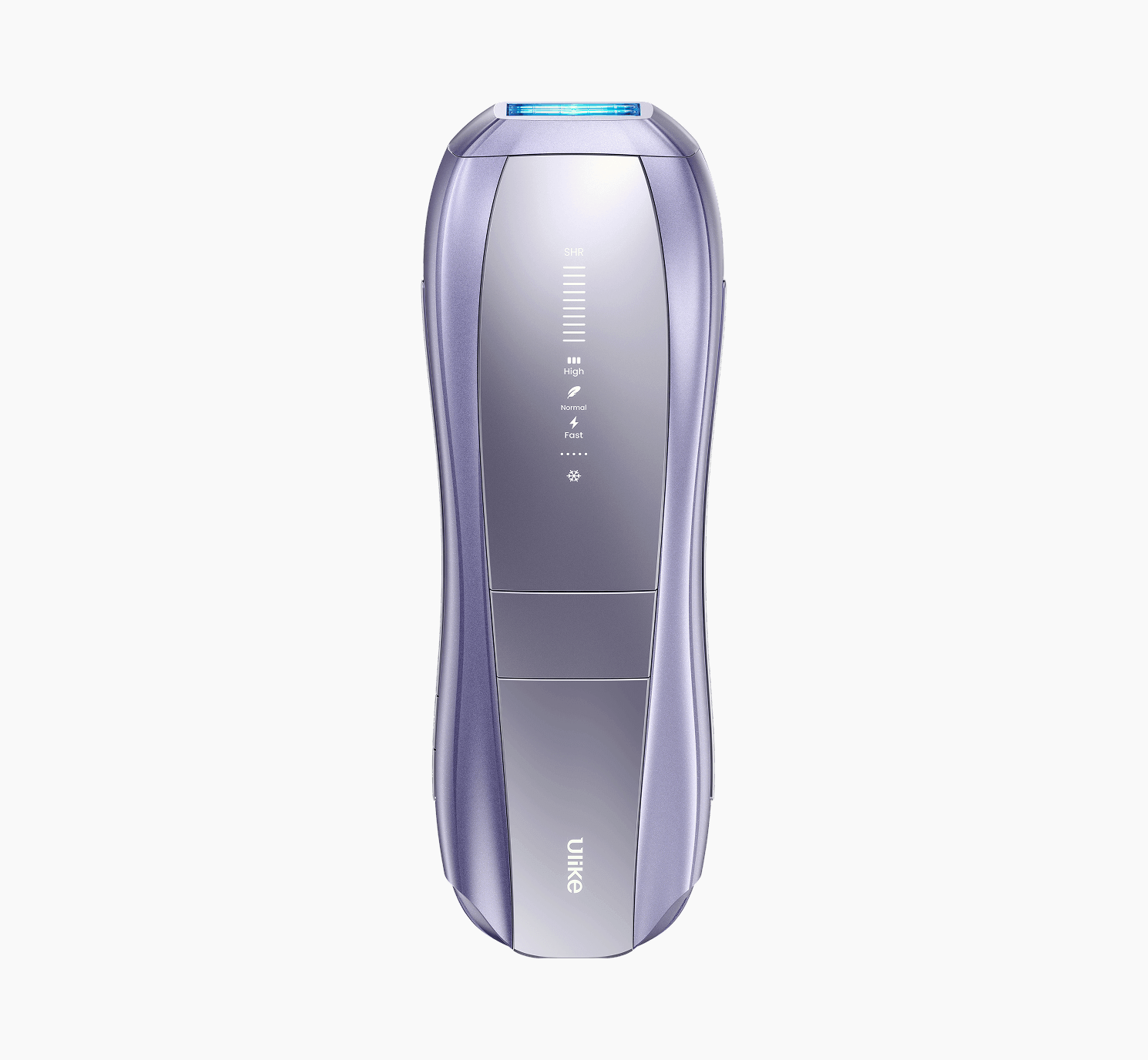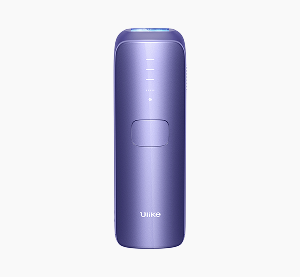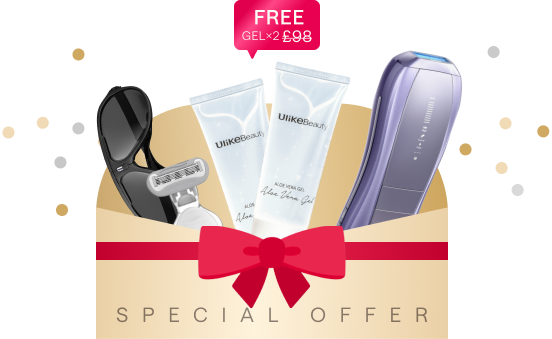Ingrown Hair Removal & Dark Spot Fix: Is IPL the Answer?
|
|
Time to read 12 min

🎄 Holiday Sale




The discount has been added to your Air 10 order.

Cart
Your cart is empty
|
|
Time to read 12 min
It starts with a simple shave or wax. Everything looks smooth for a moment, then the red bumps appear. Sometimes they’re painful, sometimes itchy, but always unwelcome. And once they settle, they leave behind dark marks that seem to last far longer than the ingrown hairs themselves. It’s frustrating, especially when you feel like you’re doing everything right.
If you’ve tried exfoliants, creams, and countless aftercare routines with little success, you’re not alone. Many women in the UK struggle with ingrown hairs and the lingering pigmentation they leave behind. These issues can affect your confidence, your wardrobe choices, and how you feel in your own skin.
That’s where IPL comes in. While most people think of it as a hair removal method, there’s more to it. IPL targets the root of the hair and, over time, helps reduce the very triggers that cause ingrown hairs. It also has the added benefit of improving the appearance of dark spots by encouraging skin cell renewal and reducing excess pigmentation.
In this article, we’ll look closely at whether IPL, as an ingrown hair removal solution, can genuinely help with both the cause and the visible effects of ingrown hairs. If you’ve been searching for a long-term, at-home solution to smoother, clearer skin, this might be exactly what you’ve been looking for.
Ingrown hairs happen when a hair curls back into the skin instead of growing outward. This is especially common after shaving or waxing, when the hair tip is cut sharp or pulled at an angle. Instead of breaking through the surface, the hair becomes trapped beneath it, creating a small bump that often looks like a spot or blemish.
For many women, these bumps are more than just annoying. The body treats trapped hair like a minor injury, triggering inflammation in the surrounding skin. That inflammation can lead to post-inflammatory hyperpigmentation, or PIH, a medical term for dark marks that often stick around long after the bump has healed.
These spots are usually flat, not raised, and can vary in shade depending on your skin tone. Women with medium to deep complexions are more prone to this type of pigmentation, and once it develops, it tends to fade very slowly on its own. Even with scrubs and brightening creams, it can take months for skin to return to an even tone.
That’s why many people say the dark marks are worse than the ingrown hairs themselves. They linger, they’re hard to cover, and they can leave you feeling self-conscious, especially during the summer or after hair removal routines meant to make your skin look and feel smoother.
IPL, or Intense Pulsed Light, works by sending gentle pulses of light into the skin, where it’s absorbed by the pigment in the hair. This light energy converts into heat, which gradually disables the hair follicle. With each treatment, the hair becomes finer, grows back more slowly, and in many cases, stops growing altogether.
By reducing how often and how thickly hair returns, IPL helps address the root cause of ingrown hairs. With fewer hairs pushing through the surface, there’s less chance of them curling inward or becoming trapped after shaving or waxing. The result is fewer bumps, less irritation, and a lower risk of inflammation.
The benefits of IPL go beyond hair removal. Many women notice an improvement in skin tone and clarity after regular use, particularly in areas where dark marks from previous ingrown hairs have lingered.
This happens because the light energy in IPL also targets excess pigment in the skin. It breaks down concentrated melanin, the substance responsible for dark spots, so that the body can gradually absorb and clear it away. Over time, this leads to a more even complexion.
In addition to targeting pigmentation, IPL stimulates the skin’s natural repair processes. This includes boosting collagen production and encouraging skin cell turnover, both of which help fade post-inflammatory marks and improve overall texture.
Although results aren’t immediate, many users see visible improvement after just a few consistent sessions. With continued use, the skin becomes smoother, brighter, and more balanced in tone.
For many women, dealing with ingrown hairs and the dark marks they leave behind isn’t just a skincare concern. It can affect confidence, day-to-day comfort, and even influence what you choose to wear. IPL offers more than a temporary solution by targeting both the cause and the lingering effects of ingrown hairs.
| Concern | Traditional Methods | IPL Advantage |
|---|---|---|
| Ingrown hair | Often worsens with shaving/waxing | Reduces regrowth at root level |
| Redness/Bumps | Exacerbated by tweezing | IPL calms follicle activity over time |
| Dark spots | Need exfoliants, vitamin C, patience | IPL speeds up fading by targeting pigment |
One of the most noticeable benefits of IPL is how it reduces the need for frequent shaving or waxing. As hair regrowth slows, the chances of developing new ingrown hairs drop significantly. That means fewer painful bumps and much less irritation in areas like the bikini line, underarms, and legs.
But the results aren’t just felt; they’re visible. As IPL helps fade the dark marks left behind by past ingrown hairs, skin begins to look clearer and more even in tone. Over time, many women find they no longer feel the need to cover up with tights, long sleeves, or rash vests. Shorts, swimsuits, and sleeveless tops become easier to wear without hesitation, especially during the warmer months in the UK when skin is more likely to be on show.
Beyond visible improvements, IPL also brings peace of mind. It shifts your focus from constantly managing skin issues to enjoying smoother, more predictable results with far less effort. And because it’s a long-term solution, the progress you make builds with each session.
For women seeking more freedom, fewer flare-ups, and skin they feel comfortable in, IPL can make a lasting difference.
IPL can be a highly effective option, but it isn’t one-size-fits-all. The best results tend to appear in women with light to medium skin tones and naturally darker hair. This is because technology works by detecting contrast between the pigment in the hair and the surrounding skin to accurately target the follicle.
If you regularly experience ingrown hairs in areas like your bikini line, underarms, or thighs, particularly after shaving or waxing, IPL can help break the cycle. It’s also a strong choice for women dealing with patchy discolouration left behind by repeated flare-ups. These dark spots can be especially stubborn on medium to deeper skin tones, and IPL offers a gradual but visible way to improve clarity and evenness.
That said, IPL isn’t suitable for everyone. Women with very dark skin or extremely fair hair, such as light blonde, red, or white, may not achieve the same results. In some cases, the device may struggle to distinguish between skin and hair pigment. However, newer models often include skin tone sensors or advanced filters to improve safety and performance. If you fall outside the typical skin-hair match, it’s important to choose a device specifically designed for your tone and type.
Before starting any treatment, check the manufacturer’s guidance and always perform a patch test. When used correctly and consistently, IPL can offer not only smoother skin but also a genuine boost in confidence.
Getting the most out of IPL isn’t just about turning the device on. It’s about using it with care and consistency. Here’s how to achieve clearer, smoother skin from home.
Before each session, take a few simple steps to make sure the treatment works effectively and safely:
A steady routine delivers the best results, especially during the first few weeks. Most users see visible improvements by:
Dark marks from past ingrown hairs won’t disappear overnight, but IPL can gradually help by:
To support this process:
Each IPL device may vary slightly, so it’s essential to read the manual and understand how yours works. Many models now include:
Avoid using IPL on broken skin, active blemishes, or very dark patches without professional advice. When used correctly, IPL can become a reliable part of your long-term skincare routine, helping you maintain smoother skin with fewer flare-ups and more even tone.
For many women, the real measure of a skincare or hair removal solution is straightforward: does it actually work? At-home IPL isn’t just another beauty trend. It’s fast becoming a trusted option across the UK for those dealing with stubborn ingrown hairs and the dark marks they tend to leave behind.
Here’s what some Ulike users have shared after following a consistent routine:
“Within five weeks, my bikini line was clear. No more bumpy shadows. I used to dread summer holidays because of it. Now I don’t think twice about putting on a swimsuit.”
“My thighs had dark patches from years of waxing. Ulike IPL really helped even the tone. I noticed the biggest change around week eight, and it’s only improved since.”
“I used to get ingrown hairs on my underarms all the time. They’d get sore and then leave greyish marks that never fully faded. The hair is much finer now, and my skin looks visibly brighter.”
While individual results vary depending on skin type and how regularly the treatment is used, many women notice visible improvements in skin tone and texture within 8 to 12 weeks. Consistent IPL sessions can help reduce the chance of new ingrown hairs while gradually fading the signs left behind by previous ones.
Based on typical user experiences, you can expect to see:
Treating ingrown hairs and the dark marks they leave behind often feels like trial and error. From exfoliating products to in-clinic laser treatments, the list of options is long, but not all approaches deliver the same results or convenience.
To help make sense of it, here’s a side-by-side look at how IPL compares to some of the most common solutions women in the UK turn to for smoother skin and more even tone.
| Method | Ingrown Hair Prevention | Fades Dark Spots | At-Home Friendly | Cost Over Time | Suitable for Sensitive Skin |
|---|---|---|---|---|---|
| IPL (e.g. Ulike) | High (with consistent use) | Gradual improvement | Yes | Moderate (one-off cost) | Most, with proper settings |
| Exfoliating Scrubs | Temporary only | Minimal effect | Yes | Low ongoing | Can cause irritation |
| Ingrown Hair Serums | Mild to moderate relief | May help fade mildly | Yes | Moderate ongoing | Generally safe |
| Professional Laser | High | Yes | No (in-clinic only) | High (per session) | With qualified practitioner |
| Waxing/Epilating | Can cause more ingrowns | May worsen marks | Yes | Ongoing | Harsh on sensitive skin |
IPL offers a rare combination of convenience, effectiveness, and long-term results. Unlike surface treatments that only mask the problem or clinic-based procedures that can be costly and time-consuming, at-home IPL gives you greater control over your skin routine, all from the comfort of home.
With regular use, it helps reduce regrowth to prevent new ingrown hairs while also softening the appearance of pigmentation left by previous breakouts. While results take time and consistency, many women find it a reliable and rewarding way to achieve smoother, clearer skin that lasts.
At-home IPL is generally safe when used correctly, but extra care is needed, especially when treating skin that’s prone to irritation or has visible pigmentation. Being informed before you begin helps you avoid unnecessary discomfort and ensures the best possible results.
Treated areas may feel warm or flushed after a session. This usually fades within a few hours. Apply a gentle, fragrance-free moisturiser to soothe the skin.
IPL works best on light to medium skin tones with darker hair. If you have darker skin or very light hair, check if your device has adaptive tech like skin tone sensors or filters.
Taking a cautious, well-informed approach ensures that IPL not only works efficiently but also protects the long-term health of your skin, especially when treating sensitive areas or visible discolouration.
IPL is more than just a way to remove unwanted hair. It’s a long-term investment in how your skin feels and looks day to day. For many women across the UK, it’s become a trusted option not only for reducing ingrown hairs but also for gradually fading the dark marks they leave behind.
With regular use, IPL helps interrupt the cycle of shaving bumps, post-waxing irritation, and uneven skin tone. It may not deliver instant results, but over time, it can lead to smoother, clearer skin that feels easier to care for and more comfortable to show off.
If you’re looking for a practical, at-home approach to managing both regrowth and pigmentation, Ulike’s UK-approved IPL device offers a safe and effective solution. Whether you're preparing for summer or simply want to feel more confident in your skin year-round, this could be the step that makes the difference.




